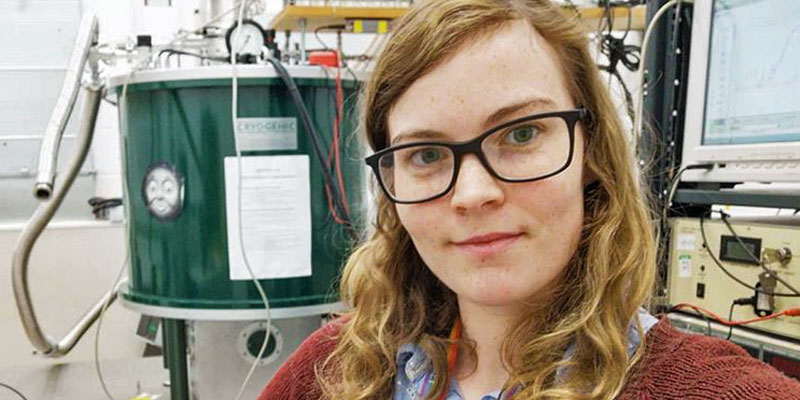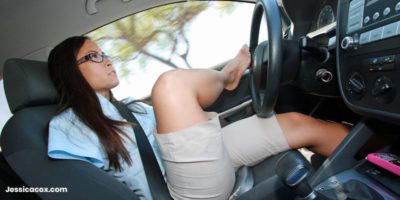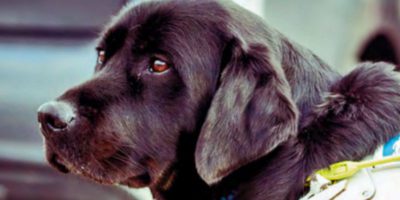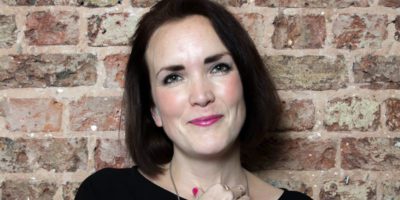Daisy Shearer is a PhD candidate in experimental condensed matter physics in the Photonics and Quantum Sciences Group at the University of Surrey’s Advanced Technology Institute. Her PhD research focuses on semiconductor spintronics for quantum technology applications. In 2019, Daisy started Neurodivergent in STEM, an initiative to raise the profiles of neurodivergent people in STEM fields and celebrate neurodivergent strengths.
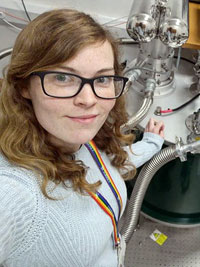
“It’s always the highlight of my week when I get a message from an aspiring scientist who is neurodivergent, telling me that seeing all of the different profiles on our website has inspired them and helped them feel like they belong in STEM.”
A taste for applied quantum physics
I did an integrated master’s degree in physics at the University of Surrey from 2014-2018 which included a placement year doing research for my master’s thesis. My placement was at the Centre for Integrated Photonics where I was part of the research and development team working on semiconductor lasers that are used in telecoms. I was helping make these lasers switch on and off more quickly while retaining a good signal along long optical fibres. This means that we can send data long distances faster — in layman’s terms, making the Internet faster.
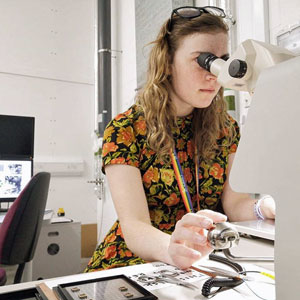
Bridging the gap between theory and technology
My doctoral research is investigating electron spin in a particular semiconductor material called indium antimonide as well as developing novel fabrication techniques for rapidly prototyping new quantum technology devices. It’s a lot of fun as I get to spend my days absorbed in all things quantum tech, whether it’s in the lab, analysing data, reading papers, or presenting my work.
My favourite part of my work is bridging the gap between theory and technology. I have a sound understanding of theoretical quantum physics through reading scientific papers and my degree and I like using this to translate those findings into something useful.
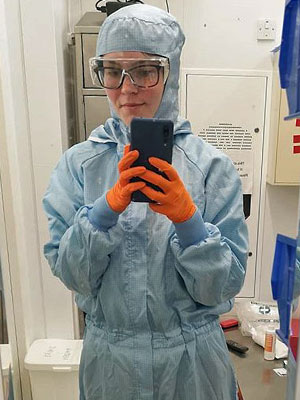
Resistance and adaptability
The pandemic came at quite an awkward time for me. I had just completed the first year and a half of my doctorate which meant that I was familiar with the literature and had been trained up to use most of the equipment I needed to use, but I hadn’t properly started getting into the nitty-gritty of my experiments.
When lockdown hit, I couldn’t go to the lab for a while and since then we’ve been encouraged to limit lab time to a few days a week. It meant that my project took a bit of a different turn, with more emphasis on computational physics but I’m now back doing the experimental work which I really enjoy.
Even though I now won’t be able to carry out all of the research that I set out to do, it isn’t unusual for the scope of a PhD to change throughout the 3-4 years. I’m hoping that the fact that I was mid-PhD when the pandemic hit demonstrates my resistance and adaptability for my future career.
Setting up Neurodivergent in STEM
Neurodivergent in STEM is a project that I started in 2019. As an autistic person in a STEM (Science, Technology, Engineering, and Mathematics) field, I had few role models to look up to and I also saw that there is still a long way to go with neurodiversity inclusion within STEM. So, I wanted to create a space where other neurodivergent scientists could share their career journey to inspire the next generation.
I also wanted to create a community to share our experiences, provide peer support, and share opportunities through a Facebook and LinkedIn group. Our website and social media pages profile various neurodivergent scientists from various different fields and backgrounds. It’s community-driven so anybody who identifies as neurodivergent within a STEM field can submit a contribution via our contributor form. I find it so inspiring reading about all of these incredible people working within STEM!
Science is all about studying the world around us and finding solutions to problems. When we have lots of people with different backgrounds and ways of thinking working together on a problem, we’re more likely to find innovative solutions.
Making a difference, together
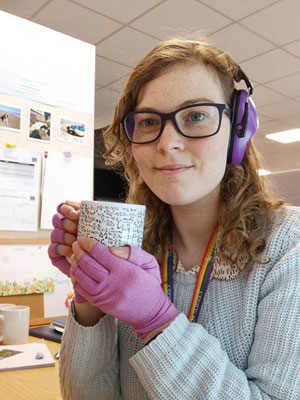
Many of the science learned societies and institutions are putting a lot of work into equality, diversity and inclusion. More and more, we see that many demographics are underrepresented in various STEM fields.
In physics, there has always been a lot of work around encouraging more girls into physics-related jobs, but over time that’s expanded to other demographics. My diversity work is focused on disability and neurodiversity but I’m equally passionate about ensuring that we take intersectional approaches to equity in STEM.
Neurodivergent in STEM is one of the many projects out there which highlights underrepresented scientists. I think that together, we can make a difference to the public perception of who can be a scientist.
It’s always the highlight of my week when I get a message from an aspiring scientist who is neurodivergent, telling me that seeing all of the different profiles on our website has inspired them and helped them feel like they belong in STEM. I’ve also heard frequently from parents of neurodivergent children who find the social media pages comforting. I think it makes a difference to be able to see yourself represented in a career that you aspire to do.
The future is bright
I still have a year left of my PhD so I’m focusing on completing that and publishing my results in scientific journals. I’m exploring lots of different options post-PhD but I want to stay within quantum technology if I can. Whether I end up in industry, at a national lab, or working in a science communication role, I have no doubt that I’ll continue with my science communication work and my equality, diversity and inclusion work in the future.
https://www.linkedin.com/in/daisy-shearer/
https://www.neurodivergentinstem.com/

